© 2013 Benden Sound Technology
Made by Serif
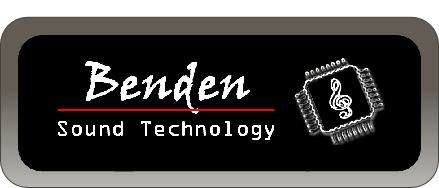


Background
When a client enquired whether I would take a look at some faulty Lexicon reverb
units, I immediately visualised a few 1U rack boxes with power supply issues. The
reality was very different, and I was introduced to the mighty Lexicon 224 in the
form of a gigantic cardboard box and three addled-
Technology
The Lexicon 224 was among the first digital effects processors. It was designed in
the late 1970s using the best technology available, which at the time was the 8080
microprocessor, 12-
Several improvements were made over the lifetime of the model, leading to a variety
of different versions. All are based around an 8-
AIN and AOUT (Analogue In and Out)
These two cards contain the input buffer/gain trimming circuitry, anti-
The audio converters are 12-
Here is the first technical "gotcha" -
Although the converters themselves are 12-
FPC (Floating Point Converter)
This card converts the 12-
ALU (Arithmetic Logic Unit)
In conjunction with the DMEM and T&C cards, the ALU is a 16-
DMEM
The DMEM card contains the working memory for the discrete DSP. There is 16Kwords
of 16-
T&C (Timing and Control)
The T&C card provides all clock and control signals for the discrete DSP. A bank
of 6810 static RAM devices store the program to be executed; this is decoded into
low-
BLC/SBC (Board Level/Single Board Computer)
This is an off-
The SBC card manages the unit, handling the user interface and loading the DSP with the selected effect algorithm.
With a 20kHz sampling rate, the audio bandwidth of the original 224 was around 8kHz.
The EPROM firmware for this configuration was revised up to version 4.3. At this
point, an eighth card was added to the unit -
An earlier unit can be upgraded to this specification if an NVS card is available, but it may require a small modification to the cardframe to route an extra signal to the NVS.
The 224X
The 224X was a major enhancement to the basic design which doubled the audio bandwidth to 16kHz. The essential structure stayed the same but completely new DMEM and T&C cards were required to sustain the doubling of speed. In particular, the 224X DMEM card carries twice the amount of RAM (32Kwords).
Additionally, the analogue filtering on the AIN and AOUT cards was revised to raise the cutoff frequency.
The most recent firmware version for this configuration is version 8.1 (NOT v8.1A).
Unless the replacement DMEM and T&C cards are available, it is not possible to upgrade a standard 224 to 224X specification. Theoretically it would be possible to modify the AIN and AOUT cards rather than replacing them, but this would be a lengthy and expensive process.
The 224XL
All units to this point had used a basic remote-
This was known as the 224XL. Firmware started with version 8.1A and proceeded up to 8.2.1.
The LARC is not interchangeable with the earlier remote head -
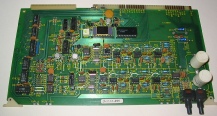
Lexicon 224 AIN card. Input transformers are at lower right.
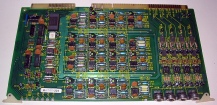
Lexicon 224 AOUT card. Note hefty drivers for output transformers.
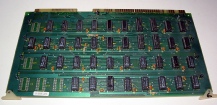
Lexicon 224 FPC card.
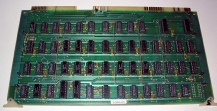
Lexicon 224 ALU card.
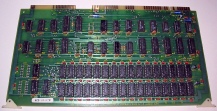
Lexicon 224X DMEM card. Note two rows of RAM Ics -
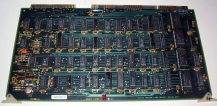
Lexicon 224X T&C card. Not the same as that fitted to the plain 224.
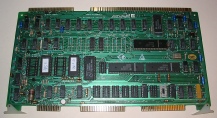
Lexicon 224 SBC card.
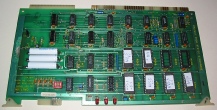
Lexicon 224 NVS card. Thee AAA NiCd batteries maintain stored patches.
| Crumar Ensemble |
| G-SSL Compressors |
| Lexicon 224/224X Reverberators |
| Oberheim OB-X |
| Oberheim Xpander |
| OB-VFD Display Upgrade |